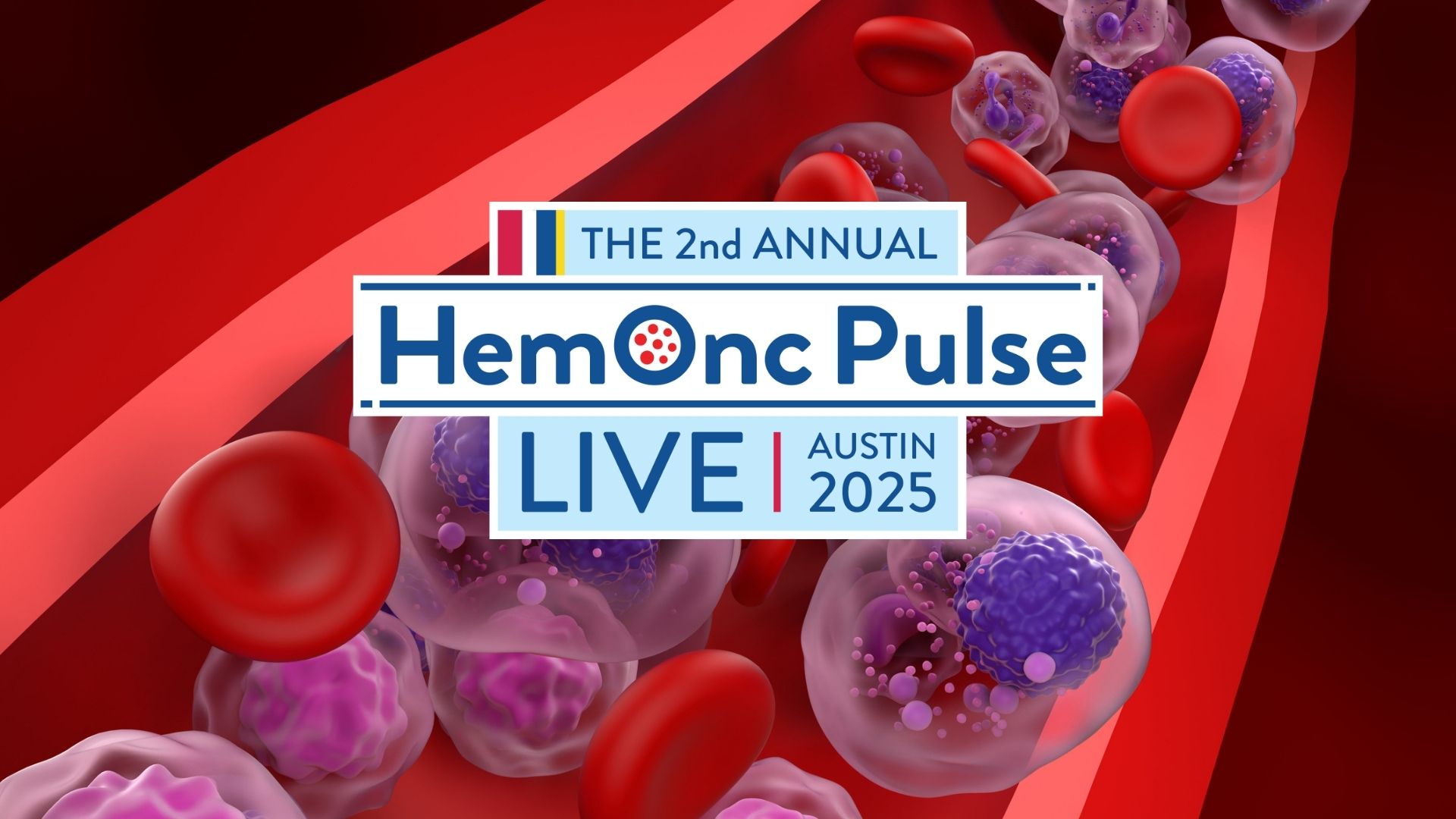
Peter Voorhees, PhD
The promise of the alkylating agent melphalan for the treatment of multiple myeloma (MM) was first documented in 1958 where reduction in tumor burden was noted in 3 of 6 patients.1 In 2018, the combination of melphalan, prednisone, bortezomib, and daratumumab received approval from the Food and Drug Administration (FDA) for the treatment of transplant-ineligible, newly diagnosed MM.2 In 2017, the Intergroupe Francophone du Myélome showed that upfront use of high dose melphalan supported by autologous stem cell transplantation (ASCT) after modern induction therapy with lenalidomide, bortezomib, and dexamethasone (RVd) produced longer progression-free survival (PFS) compared to a more protracted course of RVd induction without high dose melphalan.3 The enduring use of melphalan over six decades is a testimony to its clinical activity.
Melphalan flufenamide, also known as melflufen, is a peptide-drug conjugate that leverages a novel targeted delivery system to preferentially distribute melphalan to myeloma cells while limiting exposure to normal tissues. Melflufen consists of a carrier peptide linked to melphalan. Upon intravenous administration, lipophilic melflufen readily enters cells where it is cleaved by intracellular aminopeptidases, releasing the cytotoxic melphalan payload. Melphalan is hydrophilic and therefore trapped in the cell where it can mediate its antitumor activity. Melflufen takes advantage of higher levels of aminopeptidases in myeloma cells relative to normal tissues. As such, it concentrates in tumor cells preferentially, reducing off target toxicity. Melflufen demonstrated 50-fold increased potency in cancer cell lines and prolonged survival in a mouse model of myeloma relative to melphalan, thus distinguishing it as a superior agent preclinically.4
The clinical activity of melflufen and dexamethasone was first demonstrated in the phase I / II study, O-12-M1.5 Patients with relapsed/refractory MM who had received two or more lines of therapy, including lenalidomide and a proteasome inhibitor, and had experienced disease progression on their last line of myeloma therapy, were eligible. The recommended phase II dose was 40 mg of melflufen administered once every four weeks with 40 mg of weekly dexamethasone. The overall response rate (ORR) was 31% and median duration of response (DoR) was 8.4 months. Four of nine patients with melphalan-refractory disease achieved a partial response to therapy.5
The registrational HORIZON study was a phase II, open label, single-arm trial of melflufen plus dexamethasone for patients with relapsed/refractory myeloma who had received two or more lines of therapy, including an immunomodulatory drug and a proteasome inhibitor, and had disease refractory to pomalidomide and/or a CD38 monoclonal antibody.6 Of 157 patients, 38% had high-risk cytogenetics, 35% had extramedullary/para-medullary disease, 98% had disease refractory to the last line of therapy, and 76% had triple class-refractory disease (refractory to an immunomodulatory drug, proteasome inhibitor, and CD38 monoclonal antibody). The ORR was 29% (26% in triple refractory patients). The median DoR, PFS, and overall survival were 5.5, 4.2, and 11.6 months, respectively. Non-hematologic toxicity was mostly low grade in severity. However, grade 3 and 4 neutropenia were seen in 32% and 47% of patients, respectively, and grade 3 and 4 thrombocytopenia in 25% and 51% of patients, respectively. Grade 3 and 4 infections with concurrent grade 3 and 4 neutropenia were seen in 11% of patients, whereas grade 3 or 4 bleeding events in association with grade 3 and 4 thrombocytopenia were only seen in 3% of patients.6 Based on these data, the FDA granted accelerated approval to melflufen and dexamethasone on March 1 for patients with MM who have received four or more lines of therapy and have triple refractory disease.
With increased use of immunomodulatory drugs, proteasome inhibitors, and CD38 monoclonal antibodies in newly diagnosed and early relapsed disease, many patients eligible for melflufen and dexamethasone will have disease that is not refractory to alkylator therapy, having received high-dose melphalan as part of ASCT or in a prior cyclophosphamide-based regimen. These patients, especially those with robust marrow reserves, are good candidates for this treatment. Moving forward, it will be important to confirm the role of melflufen in randomized studies, particularly in earlier lines of therapy. In this regard, the OCEAN trial is a phase III study comparing melflufen and dexamethasone to pomalidomide and dexamethasone for patients with relapsed/refractory MM who have received at least two lines of therapy and have disease refractory to lenalidomide. Given the increasing use of triplets and quadruplets in MM, it will be important to assess the safety and efficacy of other melflufen combinations. The ANCHOR study is testing melflufen in combination with daratumumab and dexamethasone and bortezomib and dexamethasone. Lastly, while the preliminary activity in alkylator-refractory disease is compelling, it will be important to study melflufen head-to-head against other alkylators (e.g. daratumumab, bortezomib, and dexamethasone with melphalan or melflufen) to determine if melflufen is a best in class agent.
Peter Voorhees, MD, is a professor of medicine and member of the Plasma Cell Disorders Division of Levine Cancer Institute, Atrium Health. He is director of Outreach Services in LCI’s Department of Hematologic Oncology and Blood Disorders. His research is focused on the clinical development of novel therapeutic strategies for the treatment of multiple myeloma at all phases, from smoldering multiple myeloma to relapsed and refractory disease. Education about best evidence-based practices for the treatment of multiple myeloma is a key component of his work, from healthcare professionals in training to hematology/oncology providers to patients and their loved ones. He is a member of the American Society of Hematology, the American Society of Clinical Oncology, the International Multiple Myeloma Working Group, the International Myeloma Society, and Multiple Myeloma Committee for the Alliance Cooperative Group. He has presented and published extensively in multiple myeloma.
References
- Blokhin N, Larionov L, Perevodchikova N, Chebotareva L, Merkulova N. [Clinical experiences with sarcolysin in neoplastic diseases]. Annals of the New York Academy of Sciences 1958;68:1128-32.
- FDA approves daratumumab/VMP combination for newly diagnosed multiple myeloma. The ASCO Post. May 25, 2018.
- Attal M, Lauwers-Cances V, Hulin C, et al. Lenalidomide, bortezomib, and dexamethasone with transplantation for myeloma. The New England Journal of Medicine 2017;376:1311-20.
- Chauhan D, Ray A, Viktorsson K, et al. In vitro and in vivo antitumor activity of a novel alkylating agent, melphalan-flufenamide, against multiple myeloma cells. Clinical Cancer Research : an official journal of the American Association for Cancer Research 2013;19:3019-31.
- Richardson PG, Bringhen S, Voorhees P, et al. Melflufen plus dexamethasone in relapsed and refractory multiple myeloma (O-12-M1): a multicentre, international, open-label, phase 1-2 study. Lancet Haematol 2020;7:e395-e407.
- Richardson PG, Oriol A, Larocca A, et al. Melflufen and dexamethasone in heavily pretreated relapsed and refractory multiple myeloma. Journal of Clinical Oncology: official journal of the American Society of Clinical Oncology 2021;39:757-67.






 © 2025 Mashup Media, LLC, a Formedics Property. All Rights Reserved.
© 2025 Mashup Media, LLC, a Formedics Property. All Rights Reserved.